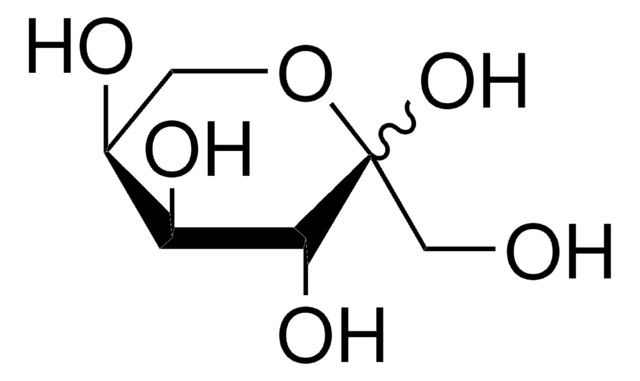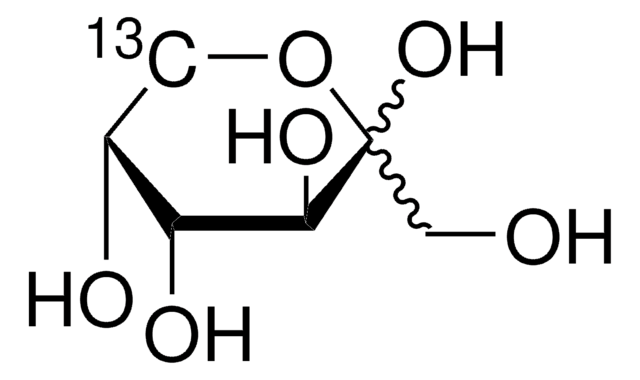F2543
D-(−)-Fructose
≥99% (HPLC), BioXtra
Sinónimos:
D-Levulose, Fruit sugar
About This Item
Productos recomendados
origen biológico
corn
Nivel de calidad
Línea del producto
BioXtra
Análisis
≥99% (HPLC)
formulario
powder
técnicas
HPLC: suitable
impurezas
<0.0005% Phosphorus (P)
<0.05% glucose (enzymatic)
<0.1% Insoluble matter
residuo de ign.
<0.1%
color
colorless
intervalo de pH útil
5.0-7.0 (25 °C, 18 g/L)
mp
119-122 °C (dec.) (lit.)
solubilidad
H2O: 1 M, clear, colorless
trazas de anión
chloride (Cl-): <0.05%
sulfate (SO42-): <0.05%
trazas de catión
Al: <0.0005%
Ca: <0.0005%
Cu: <0.0005%
Fe: <0.0005%
K: <0.005%
Mg: <0.0005%
NH4+: <0.05%
Na: <0.005%
Pb: <0.001%
Zn: <0.0005%
cadena SMILES
OC[C@@H](O)[C@@H](O)[C@H](O)C(=O)CO
InChI
1S/C6H12O6/c7-1-3(9)5(11)6(12)4(10)2-8/h3,5-9,11-12H,1-2H2/t3-,5-,6-/m1/s1
Clave InChI
BJHIKXHVCXFQLS-UYFOZJQFSA-N
¿Está buscando productos similares? Visita Guía de comparación de productos
Categorías relacionadas
Descripción general
Aplicación
<li><strong>Intracellular metabolomics and microRNAomics unveil new insight into the regulatory network for potential biocontrol mechanism of stress-tolerant Tricho-fusants interacting with phytopathogen Sclerotium rolfsii Sacc.</strong>: Explores the intracellular metabolomic and microRNAomic responses in Tricho-fusants, with D-(-)-Fructose identified as a key metabolite in stress tolerance and biocontrol mechanisms (Hirpara Gajera, 2023).</li>
<li><strong>Enzyme-based amperometric biosensors: 60 years later … Quo Vadis </strong>: Reviews advancements in enzyme-based biosensors over the past six decades, including the use of D-(-)-Fructose in the development of new biosensing technologies for clinical and environmental applications (Bollella, 2022).</li>
</ul>
Otras notas
Aplicación
Código de clase de almacenamiento
11 - Combustible Solids
Clase de riesgo para el agua (WGK)
WGK 1
Punto de inflamabilidad (°F)
Not applicable
Punto de inflamabilidad (°C)
Not applicable
Equipo de protección personal
Eyeshields, Gloves, type N95 (US)
Certificados de análisis (COA)
Busque Certificados de análisis (COA) introduciendo el número de lote del producto. Los números de lote se encuentran en la etiqueta del producto después de las palabras «Lot» o «Batch»
¿Ya tiene este producto?
Encuentre la documentación para los productos que ha comprado recientemente en la Biblioteca de documentos.
Los clientes también vieron
Chromatograms
application for HPLCNuestro equipo de científicos tiene experiencia en todas las áreas de investigación: Ciencias de la vida, Ciencia de los materiales, Síntesis química, Cromatografía, Analítica y muchas otras.
Póngase en contacto con el Servicio técnico






